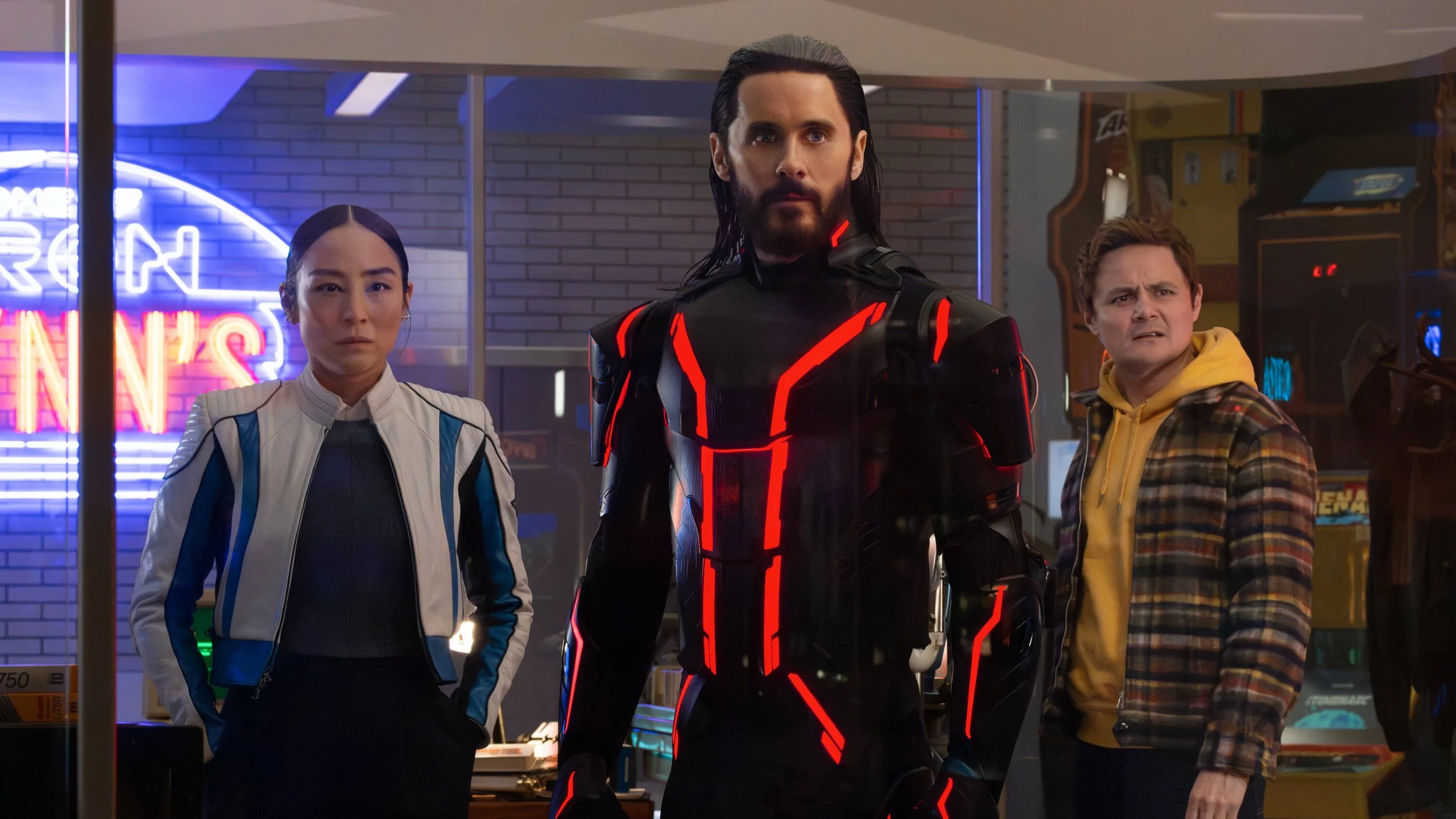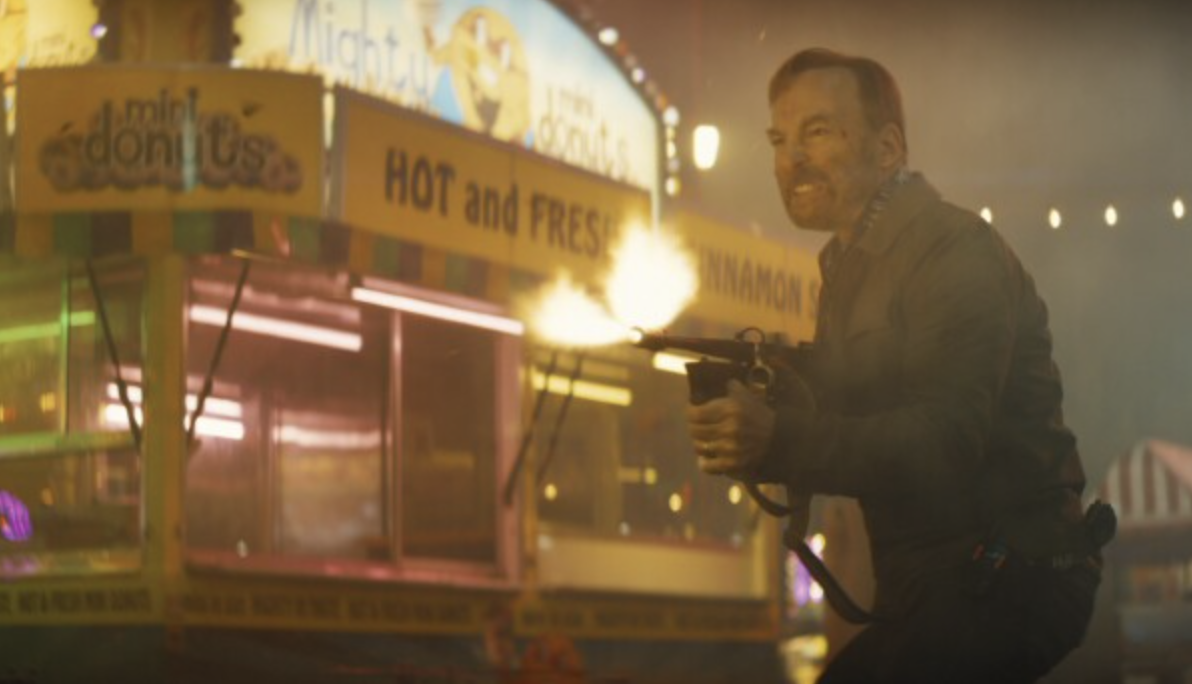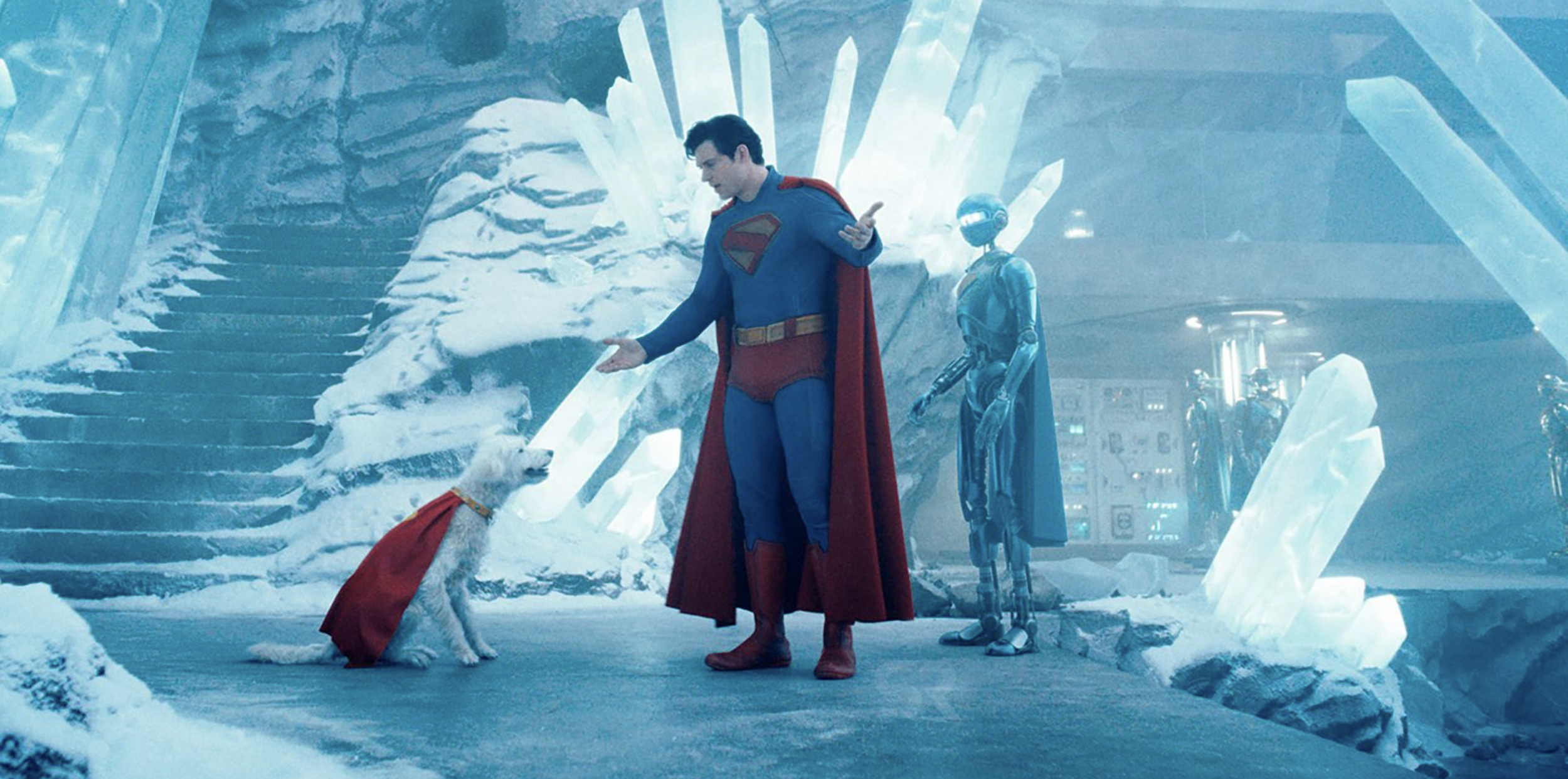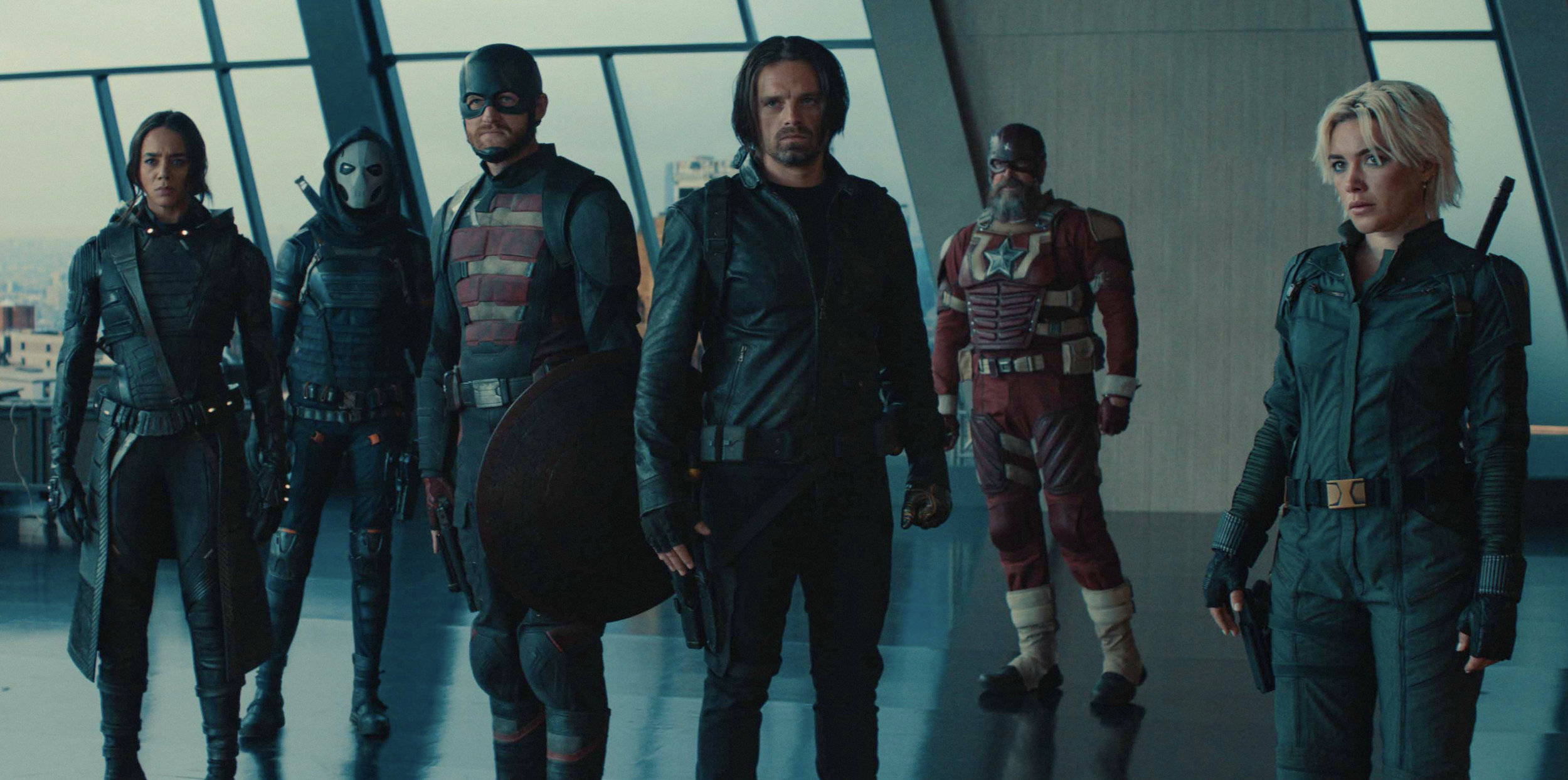TRON: ARES
Directing: C+
Acting: B-
Writing: C-
Cinematography: B
Editing: B
Special Effects: B
I wish I had half the enthusiasm as the guy who sat three seats down from me at Tron: Ares, in a theater where about eight other people were also in attendance. This guy, though—he had a really good time. He clapped his hands excitedly every time something remotely cool appeared onscreen or there was about to be some sort of action sequences. Several times I heard him say, “Yesss!” Mind you, like me, this guy was seeing the movie by himself; there were no companions with whom to share mutual excitement. He was far from a child either; this was a young, but definitely grown, man. I couldn’t decide if he had a screw loose or if I simply envied him.
My experience of the movie was not quite the same. There’s an odd element to the Tron franchise: three films now, spanning across five decades, something for at least three separate generations. The first film was released in 1982 and enjoyed modest success—for its innovative visuals if not for a particularly compelling story. Its first sequel, Tron: Legacy, was released 28 years later, in 2010. It’s been fifteen years again since then, and now we have Tron: Ares.
The story is ostensibly different, but the basic aesthetics—really the only reason to see a Tron movie—are essentially the same. The only difference now is that instead of the human characters spending most of their time inside “The Grid” (though there is some of that), this time we get AI-generated characters who assume human form in the real world—as do the vehicles they ride, or in some cases, fly. Of course, there have to be cool looking motorcycles with plenty of neon lines all over them. These race all over a city that is never identified in the film but is quite obviously Vancouver, British Columbia.
Who even cares about Tron these days, anyway? Even people who were kids in 2010 are young adults now; young people who were into the original in 1982 are basically retirees in 2025. Predictably, just about everything you see in Tron: Ares is recycled, either from previous Tron movies or other science fiction (there’s a lot of Blade Runner vibes here—it’s a little like Jared Leto’s creepy tech CEO from Blade Runner 2049 just jumped from that movie and into this one, only now he’s “the world’s most advanced AI.” He’s also “Ares,” the title character. Anyway his performance is very similar, which is in a way amusing because we are ultimately meant to think of Ares as a hero.
There’s a whole lot that director Joachim Rønning, and a team of three script writers, could have explored with AI in Tron: Ares, but very much in keeping with the franchise, he keeps all the proceedings at a level of basic comic-book simplicity. Two rival corporations are in a race to find the “permanence code,” so that they can use their gaming companies to render objects in the real world that last more than 29 minutes before they disintegrate. Why 29 minutes? Hell if I know.
There’s a bit more “legacy” stuff in here, just to create some tenuous connective tissue between the films. Evan Peters plays Julian Dillinger, grandson of Ed Dillinger, who had been the antagonist of the first film. Somehow Gillian Anderson was convinced to play Elisabeth Dillinger, Ed’s daughter and Julian’s mother, even though she isn’t given anywhere near enough to do. She just spends all her screen time fretting about how her son is fucking everything up. They’re all entwined with Dillinger Systems, the corporation to which ENCOM, at which Ed Dillinger had previously been CEO. Are you following this? None of it matters!
Ares is created by Julian; Ares becomes self-aware rather quickly; somehow other programs in the same system stay loyal to Julian as they take on human forms and ultimately hunt down both Ares and Eve (Greta Lee), the ENCOM CEO who has found the “permanence code” in an old system in the middle of snowy mountains somewhere. It’s all a big, beautiful mess.
Well, I don’t know if it’s beautiful. Plenty of the sequences are pretty cool to look at, but most of Tron: Ares also looks like the result of an AI prompt to “create a Tron sequel.” I had been impressed with the visual effects in Tron: Legacy more than anything else, and the effects here are . . . fine. I’ll forget this entire movie by next week. I can barely remember that last one. It was something to do, I guess. The visuals are decent but hardly stand apart from other effects-heavy movies; there’s nothing new here, in the story or in the visuals, to make the film in any way forward-thinking or particularly memorable.
It held my attention, I’ll give it that—but that’s a pretty low bar. The critical consensus with Ares is basically the same as that with Legacy (definitively mixed), but it feels to me like clearly diminishing returns. To say that this is brainless entertainment is an understatement. You don’t have to be above average intelligence to sense that nothing in this movie reflects any understanding whatsoever of how computers (or AI, for that matter) actually work. This is just a film capitalizing on both a surprisingly enduring franchise and the zeitgeisty concept of artificial intelligence. The 2001 Spielberg film AI: Artificial Intelligence had—and still has—far more compelling, provocative, and interesting things to say in its first five minutes than this movie does its entire runtime. And that was two and a half decades ago.
Granted, people don’t go to Tron expecting a “thinker.” I just have this naive idea that a script that makes AI its hero might have something interesting to say about it. The most interesting thing that happens here is when Ares finds himself inside the 1980s version of “The Grid” and meets an aged version of Kevin Flynn (Jeff Bridges—the only actor to appear in all three films).
At least Legacy had a great Daft Punk soundtrack going for it. Daft Punk have since disbanded; this new film uses Nine Inch Nails for its soundtrack. Not even this is all that forward-thinking, frankly. Using Trent Reznor for the soundtrack to The Social Network was the product of innovative thinking; now it’s just another generic soundtrack with propulsive beats to ride along with neon motorycles. I guess that’s all some people need. It was clearly all the guy three seats down from me needed. Oh, to be that easy to please.
It’s mentioned more than once that Ares was the Greek god of war. I’d have loved for that to become actually relevant.
Overall: C+










